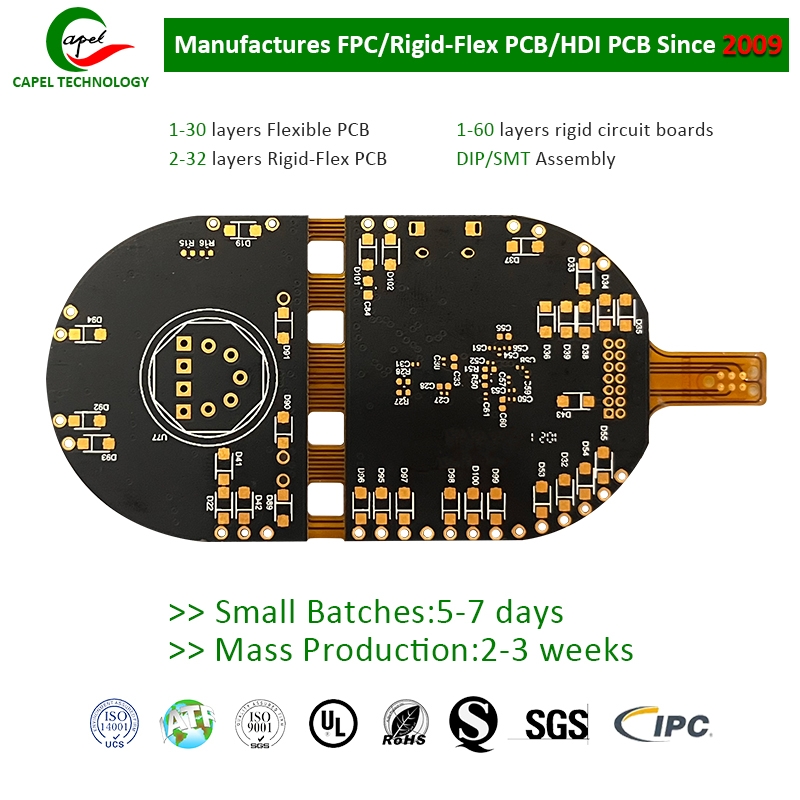How to ensure the assembly and welding quality of multi-circuit boards and avoid welding cracks and pad shedding problems?
As the demand for electronic devices continues to grow, the need for reliable and high-quality multi-circuit boards has become critical. These circuit boards play a vital role in ensuring the proper functioning of electronic devices. However, during the assembly and welding process of multi-layer circuit boards, if not handled properly, problems such as welding cracks and pad peeling may occur. In this blog post, we will discuss effective ways to ensure the quality of multi-circuit board assembly and soldering and prevent these problems from occurring.
Capel is a company with 15 years of project experience and professional industry technology. With a strong team and excellent fully automatic machines, they have become a trusted manufacturer in the industry. Their rigorous and superior manufacturing techniques combined with advanced process capabilities enable them to produce high-quality, multi-functional circuit boards.
In order to ensure the quality of assembly and welding of multilayer circuit boards, the following important steps should be followed:
1. Choose the right material: The choice of material is crucial in determining the overall quality of the circuit board. Choose high-quality raw materials that meet the required standards. This will help prevent problems associated with solder cracks and pad detachment.
2. Quality control at every stage: Implement a strong quality control system covering every stage of the manufacturing process. This includes inspecting incoming materials, monitoring the production process and thoroughly testing the final product. Regular inspections can help detect any potential defects or problems early, minimizing the possibility of solder cracks and debonded pad problems.
3. Proper storage and handling: Proper storage and handling of circuit boards is critical to maintaining their integrity. Ensure circuit boards are stored in a controlled environment with adequate humidity and temperature. Handle them carefully to avoid any physical damage that could cause solder cracks or pads to fall off.
4. Accurate design and layout: Follow industry standard design and layout guidelines to ensure proper functionality and reliability of the board. A well-designed layout can minimize the stress on components during assembly and welding, thereby reducing the chance of cracking or detachment.
5. Best assembly techniques: Use appropriate assembly techniques that suit the specific requirements of the board. Consider factors such as component size, soldering method and reflow profile to ensure a strong and reliable solder joint. Proper temperature control during welding is critical to preventing cracking and peeling.
6. Comprehensive testing: Comprehensive testing of the assembled circuit board to verify its functionality and quality. This includes electrical testing, functional testing and reliability testing. Testing helps identify any issues that may occur during assembly and soldering so corrective measures can be taken before the board reaches the end user.
By adhering to these guidelines, manufacturers can significantly improve the quality of multi-board assembly and soldering. Capel’s rigorous approach to circuit board experience ensures that their manufacturing processes are optimized to produce high quality circuit boards and minimize the possibility of solder cracks and pad peeling issues.
In summary, ensuring the quality of assembly and soldering of multiple circuit boards is critical to the overall performance and reliability of electronic devices. By following the steps above and choosing a reputable manufacturer with experience like Capel manufacturers can minimize the risk of soldering cracks and pad detachment. Investing in high-quality materials, implementing strong quality control systems, and utilizing proper assembly techniques are critical to producing reliable and durable multi-circuit boards.
Post time: Oct-01-2023
Back







